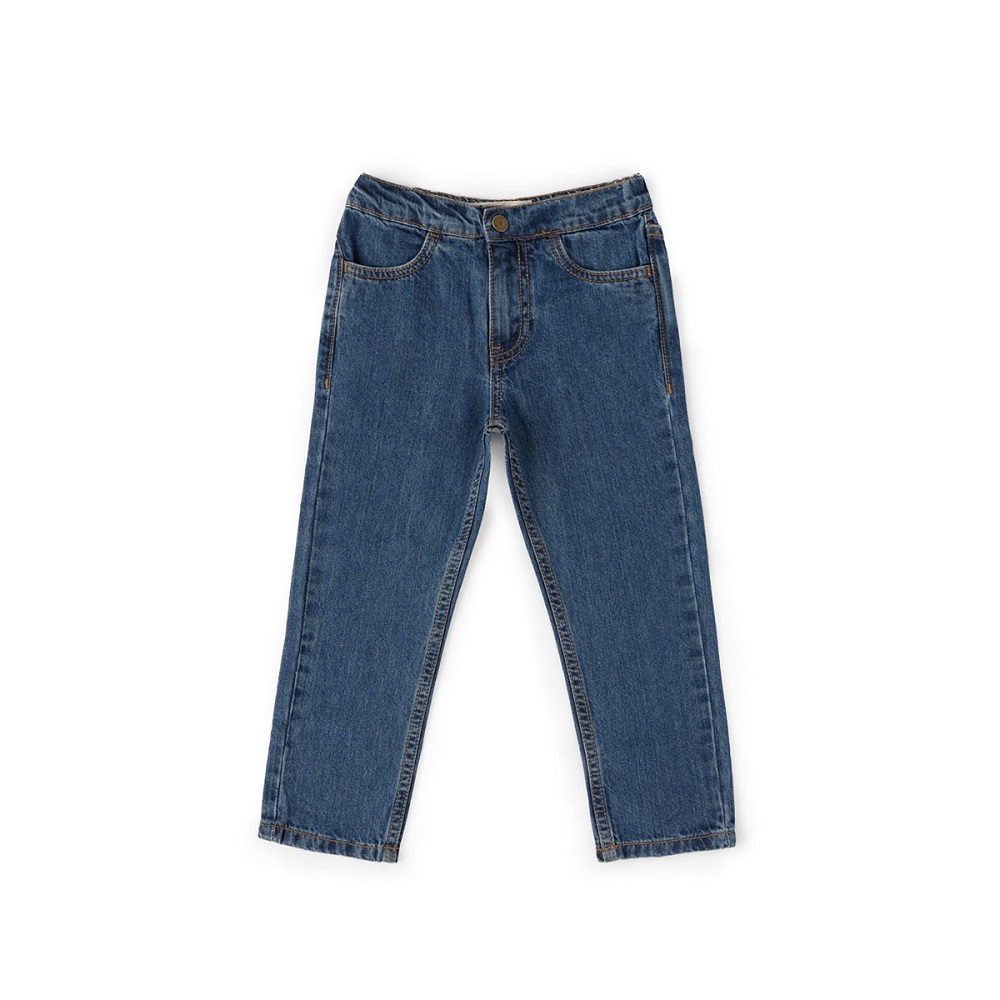Transforming Denim: The Art of Altering Jeans
Jeans serve as a wardrobe staple, but finding the perfect fit often proves challenging. Whether you’ve lost weight, gained a few pounds, or simply want to update your style, altering jeans can breathe new life into your denim collection. This DIY approach not only saves money but also allows you to customize your jeans to your exact specifications.How to alter jeans? From hemming to waist adjustments, the possibilities for personalization are nearly endless.
Many people shy away from altering jeans, believing it requires professional skills or expensive equipment. However, with a few basic tools and some patience, you can easily modify your denim at home. This guide will walk you through various alteration techniques, from simple tweaks to more advanced transformations.
Before diving into alterations, it’s crucial to understand the structure of jeans. Denim’s durability and unique construction set it apart from other fabrics. Familiarizing yourself with the various components – such as the yoke, inseam, and outseam – will help you approach alterations with confidence.
We’ll explore common alterations like hemming for length, taking in the waist, and tapering the legs. You’ll learn how to create distressed effects, add patches, and even convert your jeans into shorts. For each technique, we’ll provide step-by-step instructions and tips to achieve professional-looking results.
Safety always comes first when working with denim. We’ll discuss the proper tools to use and precautions to take, ensuring your DIY project remains enjoyable and injury-free. Additionally, we’ll share advice on when it’s best to seek professional help for more complex alterations.
Why Alter Jeans?
Before diving into the how-to, let’s understand why you might want to alter your jeans:
- Perfect Fit: Ready-made jeans are crafted to fit a standard size chart, which may not align with your unique body shape.
- Extend Longevity: Altering worn or old jeans can give them a new lease on life, making them last longer.
- Personal Style: Customizing your black jeans allows you to tweak the style, such as tapering the legs or creating distressed effects, to match your personal fashion sense.
- Sustainability: Altering jeans is an eco-friendly option compared to buying new ones, reducing waste and promoting sustainable fashion.
Tools and Materials Needed
To alter your jeans, you’ll need the following tools and materials:
- Measuring Tape: To measure and mark the areas to be altered.
- Seam Ripper: For opening up seams without damaging the fabric.
- Pins: To hold fabric in place while you work.
- Tailor’s Chalk or Fabric Marker: For marking measurements and cutting lines.
- Scissors: Sharp fabric scissors for cutting denim.
- Needle and Thread: Heavy-duty needles and thread suitable for denim.
Step-by-Step Guide to Altering Jeans
Assess the Fit
- Try On the Jeans: Put on the jeans and stand in front of a mirror. Identify areas that need adjustment, such as the waist, hips, length, or leg width. Pinch the excess fabric to see how much needs to be taken in or let out.
- Mark Problem Areas: Use tailor’s chalk or a fabric marker to outline the areas that need alteration. Be sure to mark both sides symmetrically.
Measure and Mark
- Take Measurements: Use a measuring tape to take precise measurements of the areas to be altered. For instance, if you need to take in the waist, measure how much fabric needs to be removed and note this down.
- Transfer Measurements: Lay the jeans flat and use the measurements to mark where you need to cut or sew. Ensure the lines are straight and even on both sides of the jeans.
Remove Seams
- Use a Seam Ripper: Carefully use a seam ripper to undo the stitches along the seams that need altering. For example, if you’re taking in the waist, you’ll need to open the waistband and possibly the side seams.
- Be Gentle: Work slowly to avoid tearing the fabric. Denim is sturdy but can still be damaged if not handled with care.
Cut and Adjust
- Cut Excess Fabric: If you need to shorten the legs or taper them, carefully cut along the marked lines. Remember to leave some extra fabric for hemming.
- Pin the Adjustments: Pin the fabric together along the new seam lines. This helps to keep the fabric in place and gives you a preview of the final fit.
Sew the New Seams
- Prepare Your Sewing Machine: Set up your sewing machine with a heavy-duty needle and thread suitable for denim. Adjust the stitch length to a medium setting.
- Sew Slowly: Begin sewing along the pinned lines, removing pins as you go. Take your time to ensure the stitches are straight and secure.
- Reinforce Seams: For added durability, especially in high-stress areas like the crotch and waistband, sew an additional line of stitching or use a zigzag stitch.
Finish the Edges
- Trim Excess Fabric: After sewing, trim any excess fabric close to the new seam. Be careful not to cut into the stitches.
- Press the Seams: Use an iron to press the seams flat. This helps to set the stitches and gives the jeans a professional finish.
- Hemming: If you have shortened the legs, fold the hem twice to encase the raw edge and sew it in place. Press the hem flat with an iron.
Special Alterations
While the above steps cover basic alterations, here are some special cases:
-
Waistband Adjustments:
- For taking in a waistband, you may need to remove belt loops and reattach them after sewing.
- Consider creating darts (small folds sewn into the fabric) on the back of the waistband for a more fitted look.
-
Tapering Legs:
- To taper jeans, start at the knee and sew gradually inward to the ankle. Ensure both legs are symmetrical.
- This alteration works best with straight-leg or bootcut jeans to achieve a slimmer fit.
-
Adding Elastic:
- For a more comfortable waistband, you can add elastic. Cut a small slit inside the waistband and insert the elastic, sewing it in place.
-
Distressing Denim:
- To create a distressed look, use a piece of sandpaper, a cheese grater, or a razor blade to gently abrade the fabric.
- Focus on areas that would naturally wear, such as the thighs, knees, and pockets.
Tips for Successful Alterations
- Practice Patience: Altering jeans can be a meticulous process, so take your time to ensure accuracy.
- Test on Old Jeans: If you’re new to sewing, practice on an old or inexpensive pair of shorten jeans before working on your favorites.
- Consult Online Tutorials: There are numerous video tutorials available online that can provide visual guidance.
- Seek Professional Help: For complex alterations or if you’re unsure, consider taking your jeans to a professional tailor.
Altering jeans is a valuable skill that can save you money, extend the life of your favorite garments, and help you achieve the perfect fit. With the right tools, a bit of patience, and the steps outlined in this guide, you can transform ill-fitting jeans into a custom-tailored masterpiece. Whether you’re adjusting the waist, tapering the legs, or adding unique touches, the result will be a pair of jeans that fit you like a glove and reflect your personal style. Happy sewing!

Embracing Your Denim Destiny: The Power of Alteration
Altering jeans opens up a world of possibilities, transforming ill-fitting denim into personalized wardrobe staples. By mastering these techniques, you’ve unlocked the potential to revitalize your entire jean collection. Remember, practice makes perfect, so don’t be discouraged if your first attempts aren’t flawless. Each alteration builds your skills and confidence.
As you embark on your denim alteration journey, keep these key points in mind:
1. Always measure twice before cutting. This simple rule can save you from irreversible mistakes.
2. Start with less expensive or older jeans to hone your skills before tackling your favorite pairs.
3. Invest in quality tools. Sharp scissors, sturdy needles, and a reliable sewing machine will make your alterations easier and more professional-looking.
4. Don’t be afraid to experiment. Try combining different techniques to create truly unique pieces.
5. When in doubt, seek advice. Online communities and local sewing groups can offer valuable tips and support.
By altering your jeans, you’re not just saving money or updating your style. You’re also participating in sustainable fashion practices by extending the life of your clothing. This mindful approach to your wardrobe benefits both your wallet and the environment.
Moreover, the skills you’ve acquired can extend beyond jeans. Apply these techniques to other garments in your wardrobe, further expanding your ability to customize and perfect your personal style.
Remember, altering jeans is as much an art as it is a skill. Each pair you modify tells a story – of your changing body, evolving style, or simply your growing expertise in denim customization. Wear your altered jeans with pride, knowing that you’ve created something truly unique.
As you continue to refine your alteration skills, you’ll find that your relationship with your clothing changes. You’ll develop a deeper appreciation for well-made garments and the craftsmanship involved in creating them. Embrace this new perspective and let it guide you towards a more mindful and personalized approach to fashion.














